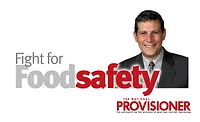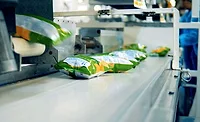Fight for Food Safety
Reviewing 2018's USDA recalls

With each passing year, our industry applies lessons learned and seeks to create ever safer, more wholesome food. Certainly, there are many ways to measure the performance of industry. One effective way is to evaluate annual recall data. Doing so can provide interesting snapshots into the industry’s performance. In the following paragraphs, I offer insight into the primary drivers for recalls this year.
At presstime in mid-December 2018, there had been 120 U.S. Department of Agriculture (USDA) recalls in 2018, collectively totaling approximately 25.3 million pounds of product. That amounts to approximately one recall every three days. The largest recall (17.2 million pounds) involved raw beef and is believed to be the source of a large-scale Salmonella outbreak, which has resulted in 246 confirmed illnesses in 25 states. This recall is notable not only for its size, but also for the fact that Salmonella is not considered an adulterant in raw beef. So, 68 percent of the pounds of product recalled in 2018 stems from a single recall involving product potentially contaminated with a pathogen that is not an even an adulterant. The smallest recall was for three pounds. That recall involved chicken wraps that contained an undeclared allergen, milk.
There were 36 recalls initiated because of the possible presence of pathogens, including Listeria monocytogenes (24), Salmonella (17), E. coli (nine), Clostridium botulinum and Clostridium perfringens (one). Note, however, that there were numerous recalls involving both Listeria and Salmonella. Of the 36 pathogen-related recalls, 15 were prompted by contaminated vegetables or seasoning that had been used as an ingredient, but were not related to contamination in the original meat product itself. For those of us who have worked in the industry for decades, this is perhaps the most striking statistic. One can scarcely imagine the ridicule and derision they would have faced had they argued (in the late 1990s and early 2000s) that vegetables, rather than meat, were often the source of pathogenic contamination.
In terms of recalls associated with illness, two recalls were associated with E. coli O26 infections. One recall involved a grocery chain in Florida and stemmed from an outbreak investigation. The USDA’s Food Safety and Inspection Service (FSIS) and the Centers for Disease Control and Prevention (CDC) identified ground beef chuck products as the likely source while investigating an outbreak that sickened 18 people. The original source of the contamination has not been discovered and the amount of recalled product was never defined. The second recall occurred during the same time frame and involved ground beef chuck products, but the two outbreaks appear to be unrelated. There were two recalls associated with Listeria monocytogenes infections in pork products that caused a combined eight illnesses. Finally, there were three recalls associated with Salmonella infections. Interestingly, one recall, believed to be the source of an outbreak that sickened 265 people only resulted in a recall of 20,000 pounds of product. Simultaneously, the outbreak that sickened 264 people resulted in a recall that has now exceeded 17 million pounds.
The remaining recalls were associated with a range of different issues. For instance, there were 36 recalls initiated because of mislabeling or the presence of undeclared allergens. There were 22 recalls initiated because of the presence of foreign materials.
Although it is our responsibility to make all food safely, and illnesses are never acceptable, I still maintain this was a good year, and the industry is continuing to do an excellent job. If you are one of the many who work tirelessly to keep our food safe, you should be proud of yourself. On behalf of my team and I, we are extraordinarily grateful to work with those who are dedicated to improve the safety of our food.
We hope that all of you had the happiest of holidays and a Merry Christmas, and we wish you a wonderful New Year.
Looking for quick answers on food safety topics?
Try Ask FSM, our new smart AI search tool.
Ask FSM →







